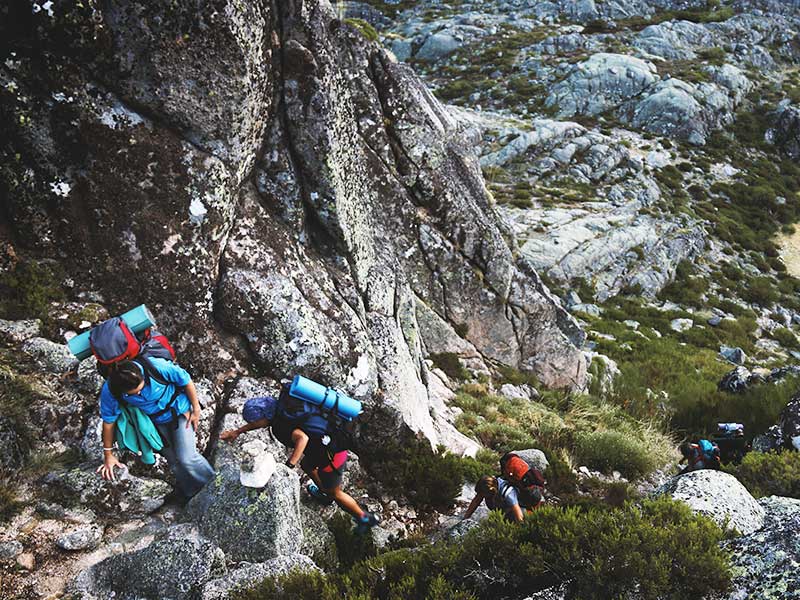How to walk in waterfalls

Imagine what it feels like to climb a slope covered with loose stones. Knowing how to walking among the waterfalls is necessary to maintain your safety.
These deposits of loose eroded rock, usually about the size of a fist, although they can be larger or smaller, shift and roll unpredictably underneath you or can even slide en masse and worse, other objects resting on the scree (larger rocks, for example) can also slide. This is a danger for you and the people behind you down the slope.
What you should bear in mind
We can't strictly tell you which rocky slopes to avoid, that will depend on your personal ability, agility and comfort level, but we can recommend some questions to ask yourself before crossing any rocky terrain:
- How unstable is the slope?
- Are there any signs of recent collapse or detachment?
- Are there cliffs or other landforms on the scree that could throw more loose rock at me?
- How much exposure am I subjecting myself to? Or, to put it another way, what are the possible consequences if you fall or slide down a waterfall?
Tips for getting through a waterfall
Of course, not all boulder slopes are "death traps full of sharp, slippery, misshapen stones", but there is a certain degree of instability in all boulder deposits and it's a crime on the toes. If you decide to give the slope a go, here are some tips on how to do it safely:
Leave the sandals at home
This is the time to use sturdy footwear with solid heel and toe protectionand good ankle support. If you find pebbles or sand in your shoes or boots, wear gaiters next time.
Exercise pressure on the toe when going uphill.
When going downhill, dig your heels in and use solid objects such as trees, patches of bare ground or large rocks for support to move forward. The trick is to make sure they are solid, even when it is obvious, double-checking; when going downhill, use solid objects such as trees, patches of bare ground or large rocks for support. walking among the waterfalls objects that appear to be firmly seated in a stony field can still slip.
Stride when you can
Follow the trail through the scree and stick to it unless you see a reason not to - this is usually the path of least resistance.
It is recommended - and very helpful - the use of trekking poles. But be aware that your hands will not be free to lean on rocks or trees.
A word about "screeing
Screeing is the term for sliding down a rocky slope on your feet, think of it as skiing without your skis (hence the name). It can be a controlled slide or "trot" down a waterfall. Be careful when doing it - it's fun, but it's also incredibly dangerous and you could end up falling head first down the slope. As the whole of the slope is unstable, it is possible that some rocks may fall in your path.
It can be very dangerous and requires a lot of effort, but when this technique is mastered you can feel like a wild mountain goat scampering across the rocks.
After practice and checking your strength, balance and skill, you can practically "dance" on a boulder field, you will know where you are landing and have your next steps already planned. You can jump from side to side when descending a steeper pitch because the change of direction helps to slow you down, it's like putting on your skis to slow you down.
Precautions on rocks of all sizes
- Don't try to jog downhill if it's raining, or if your boots are wet, or if there might be ice. A slippery surface can be dangerous.
- Reduce your distance expectations if part of your path is on loose scree or slope.
- The chances of slipping on the way down than on the way up. Bear in mind that you are hitting much harder going downhill.
- Don't go up a steep slope at a steep angle, go through a style of zigzagThis gives the rock a better chance of accepting your extra weight and keeps the person behind you out of reach of the danger zone where you will throw loose rocks.
- If you drop some rocks, shout "Rock!". If you hear someone above you shout "Rock!", duck and cover your head.
- Stay completely focused on where you are putting your feet, seeing the scenery should only be done when you stop to rest.
- Use hiking poles for more support on loose rocks.
Don't miss any adventure in the Pyrenees!
